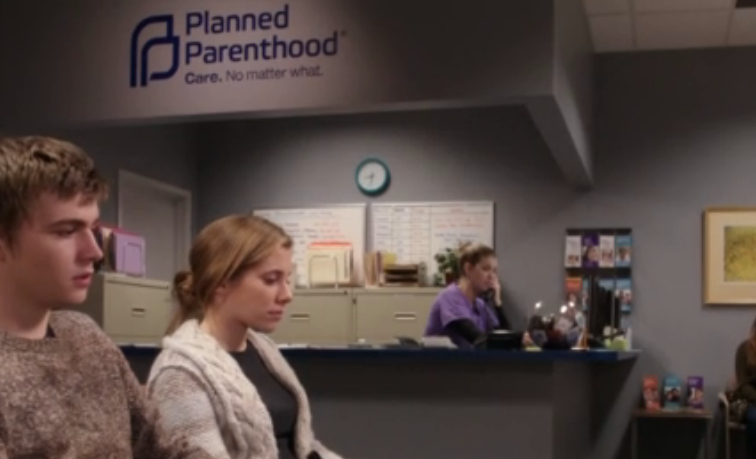 When Amy tearfully asked Drew, “Do I look normal?” following her abortion procedure in the latest episode of Parenthood, it spoke to the narratives often pushed by the anti-choice movement: That abortion is not only damaging and shameful, but also irreparably changes a woman.
When Amy tearfully asked Drew, “Do I look normal?” following her abortion procedure in the latest episode of Parenthood, it spoke to the narratives often pushed by the anti-choice movement: That abortion is not only damaging and shameful, but also irreparably changes a woman.
Yet here Amy was, neither pregnant nor “post-abortive” (a term the anti-choice movement loves to throw around), and what was meant to be a moment of reassurance seemed more like a declaration. Abortion exists. Abortion is a shared experience among women from all races, religions, ages and socioeconomic backgrounds. Abortion is normal.
And everything was normal during this episode of Parenthood, from the Planned Parenthood counselor offering pre-natal and adoption referrals to Amy’s clear and unwavering reason for wanting an abortion. That most abnormal thing about the episode, really, was that it was the first to feature an abortion plotline on prime-time television since 2011.
Abortion has long been Hollywood’s scarlet letter, and the plotlines we’re fed on television regarding the subject 41 years after Maude bravely presented the first television character to undergo an abortion have been anything but progressive. In fact, television treats abortion now as if it were some mythical tale handed down from our mothers’ mothers; we hear of it, we know someone who knows someone who went through it, but no one ever experiences it.
When unplanned pregnancies do occur on television, they usually end in deus ex miscarriage, an overused storytelling device that goes something like: Woman gets pregnant and is ambivalent, schedules an abortion appointment, then has a miscarriage before she enters the clinic. This was last seen on Girls, where the episode devoted to abortion ended in a disappointing fake-out the day of the appointment. Given the hype around the show, the drinking-White-Russians-while-hooking-up-at-a-bar miscarriage seemed to reaffirm the notion that abortions only happen to certain types of girls.
The rare times abortion does occur onscreen, the female character has to suffer, mentally or physically, as reparation. Even the most neutral depictions of abortion in recent TV history have featured a slight yielding to the anti-choice side: Tami Taylor (Friday Night Lights) nearly losing her job for recommending abortion to a student, Claire Fisher (Six Feet Under) dreaming of her now fully-developed fetus in heaven, and Cristina Yang (Grey’s Anatomy) enduring marital complications after she made her rejection of motherhood clear.
Salon.com critic Willa Paskin thought there was a bit of this in the Parenthood episode, writing that Drew’s instinct to keep the baby was “a minor sop to pro-lifers.” But we shouldn’t forget that when Drew talked about their future, it was terribly one-sided. “I can go to college,” was his answer after Amy stressed that her future goals of an education and a career were ruined. He thought he was seeing their future, but it was clouded in “I’s” that left Amy with the child she felt she couldn’t have. Their future was actually his, and it was not one Amy could imagine.
It’s appropriate, then, that the Twitter hashtag for the episode was #provoice; ultimately, that’s what Amy was given. The rest of the storyline, however, was remarkably silent for a show known for its overlapping dialogue, perhaps to convey that once a woman’s decision is made, it should be respected.
Parenthood also debunked several falsehoods of the abortion debate, depicting a Planned Parenthood clinic as clean, safe and friendly (who would’ve thought?) while also stressing that burdens are placed on teens and low-income women because of the lack of federally funding for abortion.
Of course, Parenthood taking on abortion won’t necessarily open the door for more abortion discourse on prime-time shows. If anything, we’ll have to wait another two years for the next honest portrayal of a women’s right to choose. But considering that more than 1 million women in America have an abortion each year, and one third of American women will have an abortion by age 45, we can’t pretend that abortions don’t happen. And when the right to a safe and legal abortion has been in the hands of zealous anti-choice politicians for much of Roe v. Wade’s legacy, we can’t pretend abortions don’t need to happen.
Forty years after Roe v. Wade, we shouldn’t still be looking to Maude as the template for how to craft an abortion plotline. That Maude tackled the subject one year before that landmark Supreme Court decision indicates just how much the telling of women’s abortion stories work to defy the stigma—and how far we’ve lost ground in that area. Then, Maude was challenging the status quo; now, most entertainment prefers to question it.
But when abortion rights are continually being chipped away in every region of the country—not to mention that Congress spent its first days of the year introducing a “personhood” bill—we cannot again wait until we regress to the time of Maude to be pro-voice—onscreen and off.
____________________________________
Lauren Barbato is a Los Angeles-based writer. She has worked at Ms. magazine. She’s also contributed to the Women's Media Center, AlterNet, and a slew of entertainment publications including FILTER and Yahoo! Movies. She is currently the social media and blog editor for The Line Campaign.







